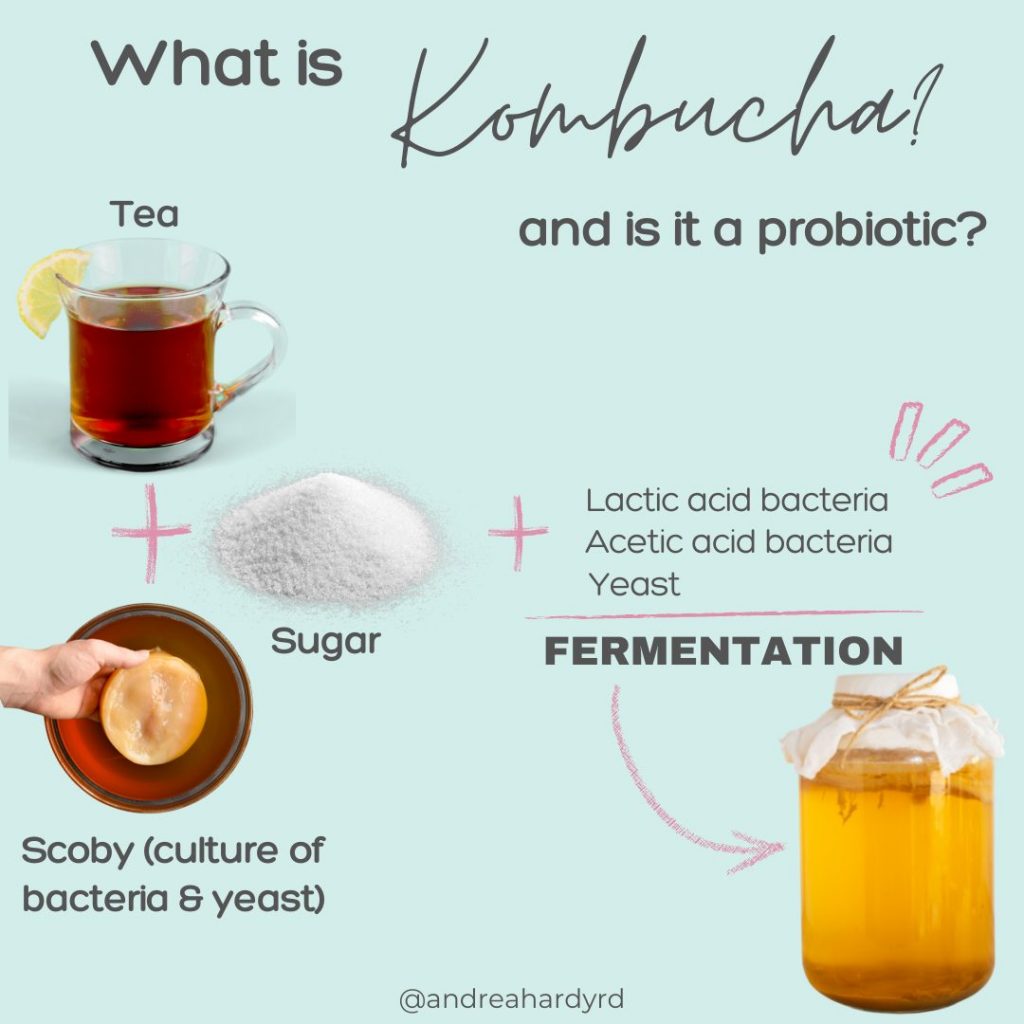Kombucha is a pretty popular On Instagram @AndreaHardyRD, I talk all about how important it is to trust yourself when it come to managing digestive disorder symptoms.
Kombucha is delicious but… it’s not a probiotic!?
It’s a FERMENT! (which isn’t a bad thing, it’s just different!).
Kombucha is delicious but… it’s not a probiotic!🦠
It’s a FERMENT! (which isn’t a bad thing, it’s just different!).
Kombucha combines tea, some form of simple carbohydrate (usually sugar), SCOBY (symbiotic culture of bacteria and yeast). It’s thought to have originated in 220 BC in China.
At the right temperature, the mixture of lactic acid bacteria, acetic acid bacteria, fungi, and yeast ferment the sugar to produce a bubbly, delicious drink.
I love the swap for pop, because the microbes digest a good portion of the sugar, making it a lower sugar beverage than pop. And – there’s a TON of fun flavours! (I’m obsessed with @happybellykombucha just down the street from our office – their love potion flavour is 👌!)
How does kombucha fit in our diets?
I LOVE ferments. I’m all for consuming live microbes and their metabolic byproducts, even if we don’t know the strain specific benefits.
WHY?
✅The fermentation of tea increases the availability of good-for-our-health polyphenols
✅Consumption of fermented foods and lactic acid bacteria have been associated with better overall health
✅It introduces transient microbes to our guts which have the possibility of exerting benefits
✅Potentially has some anti-microbial actions by way of how LAB lower pH
BUT.
There is ‘too much of a good thing’.
So many IBS patients come in, trying to eat ALL the ferments, often in large quantities and wonder why their bloated ALL.THE.TIME.
As with all things in life, portion matters! Enjoying a cup of kombucha? great. Drinking a litre of kombucha a day? Not so great. FODMAPPER’s, keep in mind, 180 ml kombucha is Low FODMAP.
Questions?
doi: 10.3390/nu11081806
doi: 10.1093/femsre/fuaa015
doi: 10.1111/j.1365-2672.2006.02963.x


Recent Comments